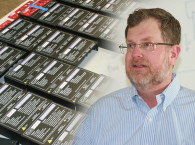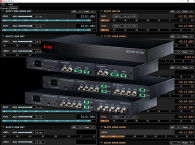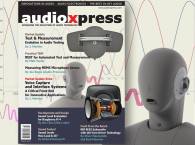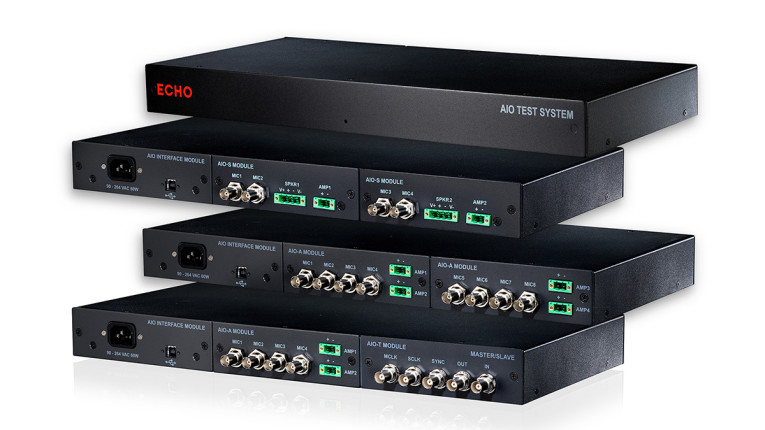
Nestled in a quaint building in downtown Santa Barbara, CA, Echo Test + Measurement is a little company with a big impact on audio test and measurement for consumer electronics. Founded in 1978 by Milo Street as Street Electronics, the company had early success in building text-to-speech cards for the Apple II and licensing custom DSP hardware and software to large computer and semiconductor companies (Analog Devices, HP, Sony, Motorola, Rockwell, and AKM).
From the 1990s through the first two decades of the 21st century, Echo Digital Audio established itself as one of the premiere pro audio sound card suppliers with the Mia, Gina, Layla (PCI-based) and AudioFire (Firewire) sound card lines. Echo expanded from its earlier work in speech compression, to music synthesis, game audio, and music recording, building hardware for every major type of audio transport technology: Bluetooth, FireWire, USB, Ethernet, and PCI, among others.
During the later years of this successful run as a sound card company, a growing number of DIY audio enthusiasts and bloggers started performing measurements of audio equipment at home using free PC software, and sharing their experiences online. The same thing happened with a few very large consumer electronics companies that started using the AudioFire sound cards for production line testing.
This eventually led to a collaboration to design and make a sound card-based system dedicated to test and measurement, leading to the first Echo AIO products in 2014.
Since 2014, Echo Digital Audio has fleshed out the AIO Test System, changed the company name to Echo Test + Measurement, and shipped more than 25,000 units to consumer electronics manufacturing plants all over the world. Echo has now completely transitioned to a test and measurement company and no longer offers traditional audio sound cards.
"With over 40 years of sound card expertise, we found ourselves in a unique position to make a significant impact on custom test and measurement systems for consumer audio manufacturing. Now, instead of spending many man-hours to configure audio sound cards to work properly as audio test systems, you can plug-and-play an Echo AIO Test System and use the time saved to make more and better products!,” states Milo Street, Echo Test + Measurement CEO and hardware guru.
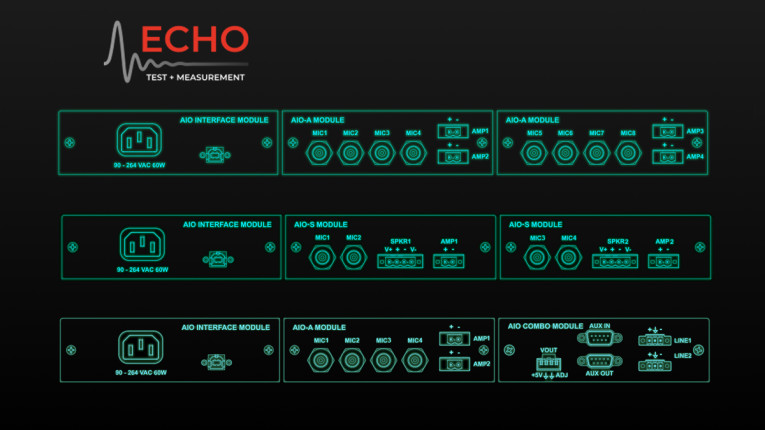
With its deep history and expertise in sound card interfaces, Echo has taken all the DIY-ishness out of creating a test system based on sound card technologies.
So what sets the Echo AIO Test System apart from traditional sound cards? According to Kris Jackson, VP of Sales for Echo Test + Measurement, “Echo products have been renowned for decades for audio performance, longevity, and reliability. Since 2014, we have built on that legacy to deliver accurate, proven, and cost-effective audio test hardware. Today, Echo provides audio test solutions for mass production to some of the best-known consumer electronics companies in the world.”
Echo AIO uses test industry standard connections and interfaces, such as IEPE microphone connections on BNC connectors with CCP power, and TEDS readers built into each channel. Output options include line level, headphone, and power amplifiers on EuroBlock connectors with added sense resistors built in for making impedance measurements.
There is even a 10-channel TDM bus module for making chip level (I2S) measurements. Other available options include battery simulation, GPIO inputs and outputs, and Pressure, Temperature, and Humidity sensors (unique to Echo). All these features that come standard on Echo AIO are costly add-ons to traditional sound card-based test setups.
The AIO Test System also enables the user to control all parameters of the hardware using three different methods. First, by using the AIO Control Panel application, a simple to use hardware setup and control app. Second, through the AIO Command-Line application that allows hardware configuration under program control in a test sequence. And finally using the AIO Interface Library, a dynamic library with a standard C-language interface allowing complete control of the AIO from any programming language.
The Echo AIO test system is modular, allowing for greater flexibility and system expansion. Two AIO modules can be fitted in a chassis. Maximum analog channel count is currently eight analog mic/line inputs by four outputs (line, headphone, or amplifier). Maximum digital channel count is 10x10 (TDM). Combining an analog module and a TDM module in the same chassis achieves a system maximum of 14 inputs by 12 outputs.
The AIO Test System is also cross-platform and supports Windows, Mac, and Unix-based systems. It supports WASAPI and CoreAudio drivers in addition to ASIO (recommended). Finally, these solutions from Echo work with any audio test software that interfaces to the mentioned audio drivers, including LabVIEW, MatLab, APx500 Flex, Soundcheck, ARTA, and others. Users can also write their own interface using common C languages and the Dynamic Library. In effect, compatibility and ease of interfacing makes Echo AIO an attractive choice for adding to existing systems or building completely new testing environments. And the company intends to expand the range further through 2022.
www.echotm.com
This article was originally published in audioXpress, March 2022, as part of the Test and Measurement Market Update report.





